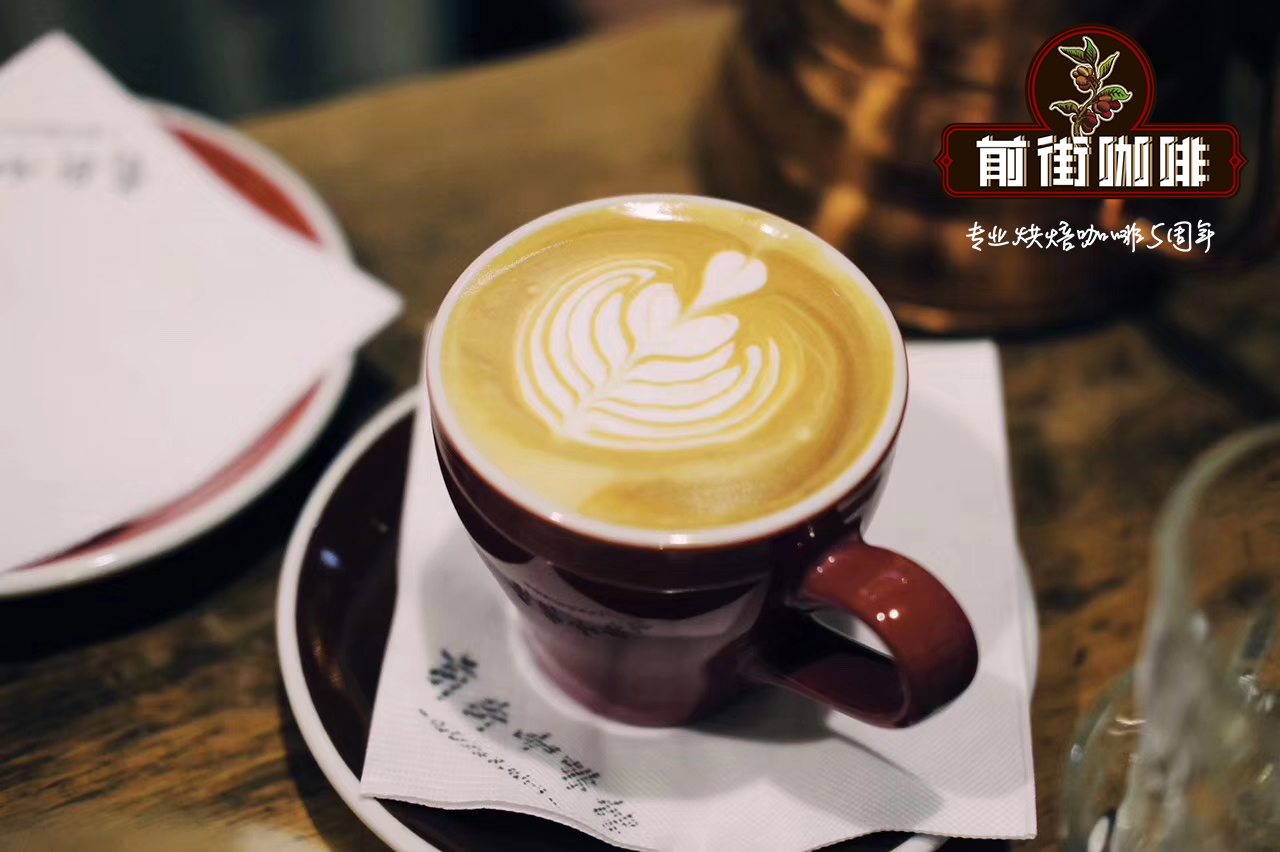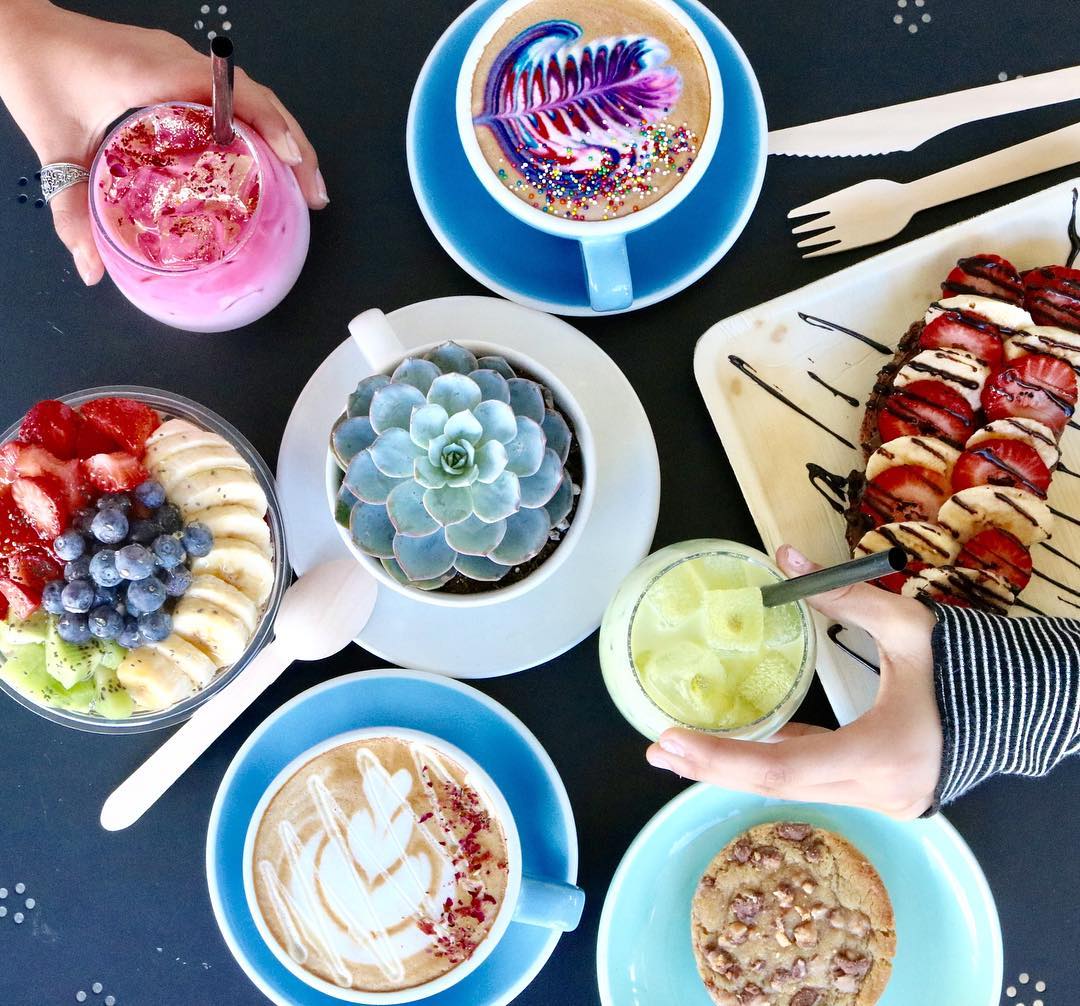How do lattes and cappuccinos taste? What's the difference? Can it reflect the quality of coffee beans?

Professional coffee knowledge exchange More coffee bean information Please pay attention to coffee workshop (Weixin Official Accounts cafe_style)
Cappuccino_Cappuccino Coffee_Cappuccino Meaning
Formula-wise, the words latte and cappuccino are not clearly defined. The only difference between them is that latte has more milk than cappuccino and thinner foam than cappuccino.
For lattes, the ratio of milk to espresso varies between 3:1 and 5:1, meaning that if espresso has 30 grams, milk has 90 grams to 150 grams. This ratio fluctuates, and overall, if you buy more latte milk in large chains such as Starbucks and Costa, you will buy less latte milk in independent boutique cafes.
Latté refers to Café Latté in English-speaking countries, but in Italy, the native country of Italian coffee, Latté refers to pure milk, so if you order a cup of "Latté" in Italy, the waiter will definitely serve you a glass of white milk…
So... yeah, write latte, pronounce nai.
What about cappuccino? The ratio of milk to Italian concentrate ranges from 2:1 to 3.5: 1. So theoretically, cappuccino cups should be smaller than latte cups. What takes up a lot of space in a cappuccino is the foam. The foam contains a lot of air, so it takes up a lot of volume, but the mass is very small. The smaller proportion of milk makes cappuccino coffee taste heavier than latte.
Why so much milk? So if we go for a latte, doesn't that mean we've had a big glass of milk?
As mentioned in Italian Condensation, the flavor of Italian Condensation is so strong that most people can't handle it. Clever Europeans have softened the bitter taste of the strong taste by adding milk (yes, they do the same with black tea) and adding the sweet taste of milk.
Well, to understand how they do it, it's best to look at the ingredients of these two drinks first.
In essence, the two drinks are no different except for the milk part. Italy thick we already know, then these two drinks with "milk foam" in the special milk is how to make it?
The two sticks on the coffee machine are the keys to making milk foam. We call them "air needles". One of the functions of the air needle was self-evident at this time, which was to increase the temperature! Make the air needle mouth sink into the liquid level, then open the valve, high temperature steam into the liquid heat transfer, can be in 10 seconds a cup of liquid temperature to 80 degrees. If milk is heated in this way, the finished product is what we call "steamed milk." Steaming milk requires a special vessel, which we call a "milk vat" or a "flower vat." The tank body is often bucket-shaped, with a slightly larger opening to facilitate the flow rate of poured milk. Add cold milk (in the refrigerator at 2°C) to the milk jar, pour about 3/5 of the milk, then lift the air needle slightly and place it in the milk jar so that the air needle is slightly submerged in the milk.
At this point and then open the valve, this time will be issued a sharp "sizzling" sound, heating began. Interested friends can go to Starbucks to sit, deliberately listen to words, probably will be this sound noisy dizzy. Milk foam, some people also call milk foam. The air needle blows hot steam into the milk. The fat in the milk makes the milk bubble up. Just like blowing soap bubbles, the outer wall of soap bubbles is soapy water with special molecular structure, so the outer wall of milk bubbles is a small bubble supported by fat and protein components in milk. When the milk is steamed, pour it into a large glass filled with espresso, and the latte/cappuccino is ready.
Latte Art, is a different charm of the coffee world. Through the coordination of the wrist, white creamy fine milk bubbles float on the coffee oil to form different patterns, so as to achieve the purpose of pleasing to the eye. Since latte foam is thinner than cappuccino, pull it in the form of latte, and less foam is more free to move. In the case of cappuccino, the bulky nature of thicker foam makes it impossible to complete very complex patterns, so cappuccino pull
Lattes are often much easier to pull. Latte Art, literally translated as latte art, this translation also to some extent shows that pull flowers are "exclusive" to latte.
However, please note that most Starbucks and Costa stores do not serve flowers. They often produce coffee in packaged cups, so the quality of flowers has no effect on their sales, and you will not feel any difference from the coffee when drinking from the packaged cup. If you want to see cool flower art, please look for independent boutique cafes, where the flower monsters are there.
Through a special technique such as pulling flowers, smooth milk and Italian concentrate finally blend together and become the final latte or cappuccino placed in front of you. The hard work is not explained by a simple coffee structure diagram. I hope everyone treats each cup of coffee seriously, not only for the twenty or thirty dollars paid, but also for the baristas and coffee farmers to offer a lot of labor behind that cup.
Having said that, how do lattes and cappuccinos taste? What's the difference?
I am here to analyze the taste and taste of both in a more objective and simple way.
Latte, because it has a higher milk content than cappuccino, the coffee taste is more diluted and the milk taste is heavier. For those of you who hate bitter coffee, start with lattes and look for subtle flavors other than bitterness in the thinnest coffee.
Cappuccino, milk content is small, and most of it is fine milk foam, its coffee flavor will naturally be many rich, plus thick fine milk foam, drink a cup of authentic cappuccino is like a head into soft Simmons. The palate is thick and delicate, with a stronger coffee flavor. For those of you who prefer strong coffee, between latte and cappuccino, I'll give you a cappuccino.
Whether you're in a Starbucks chain or a small boutique cafe, try not to add sugar to lattes or cappuccinos, or at least taste what the real coffee tastes like before you add sugar. Countless coffee experts agree that sugar is the killer of coffee flavor. Coffee drinks that had been diluted many times with milk, plus packets of white sugar and yellow sugar?
So, with all that milk, do lattes and cappuccinos really reflect the quality of the beans?
The answer is yes. Even with so much milk added, the intense Italian concentrate is not completely overshadowed. Of course, after adding milk, the human tongue's ability to perceive the flavor of coffee itself will be greatly reduced, but this does not mean that people cannot taste coffee. Even the layman, when faced with a latte made from commercial beans and a latte made from specialty beans, can still clearly find out which one is better, but the layman may not be able to say exactly what is good about the specialty beans.
Seesaw Cafe in Shanghai once launched SOE Ye Jia Xue Fei latte, friends still found Ye Jia's unique flower fragrance in the latte filled with milk, which truly illustrates the impact of coffee beans on milk coffee. If coffee beans really have no effect on milk coffee, why are boutique cafes still studying better Italian blends? Of course, there was still a limitation. Although milk coffee did not eliminate the tongue's ability to sense changes in flavor, it at least greatly reduced its ability to sense changes.
Industry insiders refer to lattes as milk coffee or cream-based coffee. From a professional point of view, these cream-based coffee research value is not as high as black coffee. Coffee research must be pure coffee research, and should not be pure coffee + milk research, in the eyes of picky experts, milk coffee should be called coffee drinks.
Although it didn't get high marks in the professional field, milk coffee prevailed in the art and life fields. Strange and wonderful pull flowers always make coffee pleasing to the eye, diluted coffee is also more acceptable to the masses who are afraid of bitterness, sweet and delicate steamed milk also makes it easier to eat. Some people have commented that milk coffee combines two of the most wonderful things in the world: coffee and milk. Drinking milk coffee has become a leisurely attitude towards life.
If so, pure coffee tends to be in the technical field, then milk coffee tends to be in the life field. Which is better or worse? Because coffee is ultimately drunk by people, people decide the definition of the word "coffee", and personal subjective imposition has little meaning for the masses. Professional or not? Who cares? As long as it's good.
What is the biggest feature of cappuccino coffee?
Important Notice :
前街咖啡 FrontStreet Coffee has moved to new addredd:
FrontStreet Coffee Address: 315,Donghua East Road,GuangZhou
Tel:020 38364473
- Prev

Why is the coffee we drink called latte, American style, cappuccino? The Love meaning of Cappuccino
Professional coffee knowledge exchange more coffee bean information please follow the coffee workshop (Wechat official account cafe_style) the meaning of cappuccino _ cappuccino coffee _ cappuccino every time you go to a cafe, the waiter asks what kind of coffee, our answer is latte, cappuccino, American style, mocha seems to have no other choice. Each kind of coffee has its own unique flavor.
- Next

Super creative coffee-have you ever had a rainbow latte or a rose gold iced latte?
Professional coffee knowledge exchange more coffee bean information please follow the coffee workshop (Wechat official account cafe_style) latte coffee _ the meaning of latte coffee the difference between latte and mocha there is a coffee shop in San Diego, bringing latte jacquard art to the next level, S3 Coffee Bar began to offer super creative coffee and new flavors, including rose gold ice latte
Related
- Beginners will see the "Coffee pull flower" guide!
- What is the difference between ice blog purified milk and ordinary milk coffee?
- Why is the Philippines the largest producer of crops in Liberia?
- For coffee extraction, should the fine powder be retained?
- How does extracted espresso fill pressed powder? How much strength does it take to press the powder?
- How to make jasmine cold extract coffee? Is the jasmine + latte good?
- Will this little toy really make the coffee taste better? How does Lily Drip affect coffee extraction?
- Will the action of slapping the filter cup also affect coffee extraction?
- What's the difference between powder-to-water ratio and powder-to-liquid ratio?
- What is the Ethiopian local species? What does it have to do with Heirloom native species?

